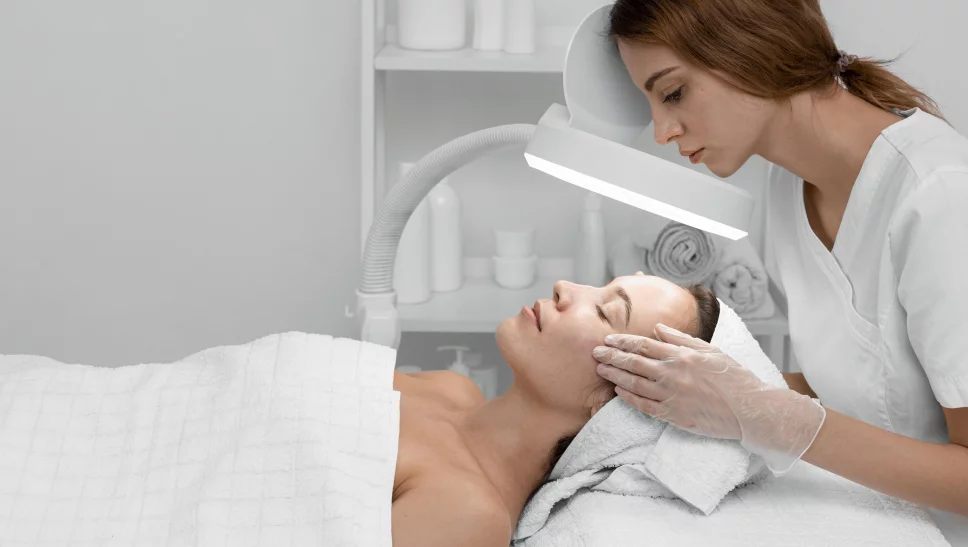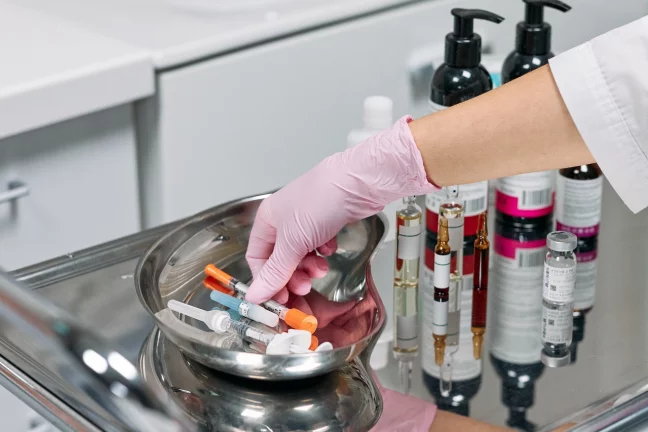-

- Author e-FILLERS Team
- Mar 28th, 2025
How to Handle Filler Complications Safely

How to Handle Filler Complications: A Guide for New Practitioners
Dermal fillers are widely regarded as safe and effective when performed by trained professionals. However, even with the best techniques and high-quality products, complications can occur. For new aesthetic practitioners, knowing how to recognize, manage, and prevent complications is essential not only for patient safety but also for building long-term trust and professional credibility.
Understanding the types of complications, early warning signs, and appropriate responses can make all the difference in patient outcomes. This guide offers a clear overview of how to handle filler-related issues confidently and responsibly.
Common Filler Complications and How to Identify Them
The most frequent complications with hyaluronic acid fillers are mild and temporary. These can include swelling, bruising, and tenderness at the injection site. However, more serious complications—though rare—can occur and require swift action.
Swelling and Bruising
These are expected side effects and usually resolve within a few days. Cold compresses and arnica may help reduce inflammation. Proper injection technique and the use of a cannula can minimize trauma.
Lumps and Irregularities
Lumps may form due to superficial placement or uneven distribution of the product. Gentle massage within the first few days can help. If a lump persists, hyaluronidase can be used to dissolve hyaluronic acid fillers.
Tyndall Effect
A bluish tint on the skin surface can occur when filler is placed too superficially, especially under the eyes. This is typically corrected with hyaluronidase. Prevention lies in proper product selection and depth of injection.
Delayed Onset Nodules
These are inflammatory reactions that can appear weeks or months after treatment. They may be immune-mediated or caused by infection. Management involves oral steroids, antibiotics, or in some cases, dissolving the filler.
Infection
Though uncommon, infections can occur. Signs include redness, warmth, pain, and pus. Treat with antibiotics, and refer to a specialist if symptoms worsen.
The Most Serious: Vascular Occlusion
Vascular occlusion is the most critical complication to recognize and treat immediately. It happens when filler unintentionally enters a blood vessel and blocks blood flow, which can lead to tissue necrosis or, in severe cases, blindness.
Early signs include:
Blanching of the skin
Severe pain
Mottled or dusky skin
Coolness to the touch
Immediate action should include:
Stop injecting immediately
Massage the area to disperse the product
Apply warm compresses
Administer high doses of hyaluronidase directly into the area to dissolve the filler
Consider using aspirin as an anti-platelet agent
Refer to a specialist if symptoms persist or worsen
Having a vascular occlusion protocol in place and hyaluronidase readily available is absolutely critical. All practitioners must be trained to act within minutes of identifying symptoms.
Best Practices for Prevention
The best way to handle complications is to prevent them in the first place. Here are key habits to adopt as a new practitioner:
Know Your Anatomy: Study vascular maps and danger zones for every injection site.
Use the Right Products: Choose fillers with proven safety records and appropriate viscosities for each treatment area.
Choose Cannulas When Appropriate: Blunt-tip cannulas can reduce the risk of intravascular injection.
Aspiration Isn’t Everything: While aspirating before injection can help, it’s not 100% reliable. Slow, low-pressure injection and continuous movement are safer.
Have a Protocol: Always keep hyaluronidase, aspirin, sterile saline, and emergency contact numbers ready in your treatment room.
Follow-Up is Key: Schedule follow-up appointments and be available for concerns in the days following the procedure.
When to Refer
Even the most experienced practitioners know when to refer a patient. If a complication escalates, doesn’t resolve with first-line treatments, or falls outside your scope of expertise, referring to a dermatologist, plastic surgeon, or ophthalmologist is the safest and most ethical course of action.
Final Thoughts
Handling complications with calm, confidence, and clarity is what separates a skilled injector from a beginner. Mistakes or adverse reactions do not mean failure—how you respond to them defines your professionalism. Always prioritize patient safety, keep learning, and never hesitate to ask for expert advice.
With proper preparation, ongoing education, and a commitment to best practices, new practitioners can deliver beautiful, safe results while minimizing the risk of complications.
Dermal Fillers
Top 5 Best Fillers for Lip Augmentation in 2025
.webp)
 (1).webp)
.webp)



